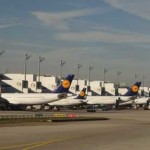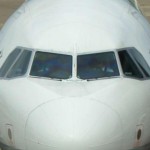2006/2007 winter timetable contains flights to 183 destinations in 78 countries
Lufthansa is further expanding its global network. In the forthcoming winter season, it will offer flights to a total of 183 destinations in 78 countries (winter 2005/2006: 181 destinations in 76 countries). Available capacity across the network will be increased by 3.3 per cent. European services will grow by 6.0 per cent, long-haul services by 2.2 per cent. Lufthansa passengers will thus have a choice of 12,908 flights per week. Kolkata (formerly Calcutta) is a new destination in the long-haul network, while additional flights will be offered to San Francisco and São Paulo. On European routes, Lufthansa is augmenting its services to Moscow, Innsbruck, Geneva, London City Airport, Palma de Mallorca and Valencia during this winter timetable, which is valid from 29 October 2006 to 24 March 2007 and coincides with winter time in many countries in Europe.
Kolkata is Lufthansa’s sixth destination in India
From 1 December 2006, Lufthansa passengers will be able to fly non-stop to Kolkata, the capital of West Bengal, for the first time. The new service will operate thrice weekly from Frankfurt. Lufthansa is thus steadily strengthening its position as the market leader in the Asian subcontinent. With 88 flights a week, it offers more connections between Europe and India than any other airline. “Our winter timetable underpins our sound strategy of further augmenting our network in key target growth markets such as India,” explains Dr. Holger Hätty, member of the Airline Board, Lufthansa German Airlines. “With almost 300 flights a week to 24 destinations, Lufthansa remains the strongest European airline in the Asian market.”
Besides the existing flights offered on a codeshare basis with South African Airways, Lufthansa will resume services to Cape Town in South Africa this winter and operate the route itself. Long-haul services from Munich will also be further expanded. With two more flights a week to San Francisco, Lufthansa will serve the Californian city daily during the winter months. Moreover, the new service from Munich to São Paulo, which was launched on 13 September, will be continued in the winter timetable in addition to the daily service to São Paulo from Frankfurt.
New European connections via hubs and regional airports
This winter, customers will benefit from new services from all the major airports served by Lufthansa. The timetable from Hamburg includes five new European destinations, which are also very attractive for leisure travellers: the Russian capital Moscow, Innsbruck and Geneva – two destinations which will appeal particularly to winter sports enthusiasts (Lufthansa’s partner airlines Austrian and Swiss will operate these routes on a codeshare basis) – as well as Palma de Mallorca and Valencia. From 29 October, sun-seeking passengers will also be able to fly to these two popular resorts on the Mediterranean from Düsseldorf.
In addition, Geneva, a city with an international flair, will be served by six flights a week from Stuttgart. Business travellers will profit from new connections to the town-based London City Airport as well, which will be included into the timetable for the first time departing from Hamburg and Nuremberg. The Munich flights to London City will also be continued for this winter. “We are increasing our European services in response to customers’ wishes and further strengthening our dense European network. The additional flights will be operated not only from our Frankfurt and Munich hubs, but also from other German airports,” stresses Dr. Holger Hätty. “For our customers, flight time and proximity to an airport are important criteria when planning their journey.”
Three quarters of all Lufthansa flights are operated via Frankfurt or Munich
Each week a total of 5,352 flights take off and land at Frankfurt, Lufthansa’s largest hub. Its second hub, Munich, comes a close second with 4,678 flight movements. Almost 78 per cent of all Lufthansa flights connect to one of these two hubs. Lufthansa passengers also benefit from the route network of Star Alliance, the world’s largest aviation alliance, which now encompasses 18 airlines. In all, Star Alliance, including the three regional member airlines, offers more than 16,000 flights a day to 841 destinations in 157 countries.





